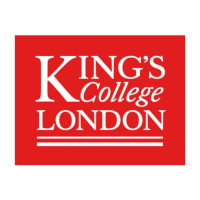
12 Nov PhD – AI-enabled Imaging, Affordable Imaging
AI at the edge: From movement models to neurological outcomes
Project ID: 2022_024 · Project category: Core
1st Supervisor: Jorge Cardoso, King’s College London
2nd Supervisor: Seb Ourselin, King’s College London
Clinical Champions: James Teo and Yee Mah, King’s College London
Aim of the PhD Project:
- To develop state-of-the-art models that extract human pose using AI from in-hospital video streams
- To characterise the temporal component of human movement using recurrent and graph neural networks
- Understand the causal relationships between movement models and brain imaging features
- Jointly use movement models, imaging and neurological tests to diagnose and prognose neurological conditions
Project Description / Background:
Human gait is a high-dimensional system optimised for accuracy, stability, speed or energy efficiency in healthy young adults. As the brain ages through chronic cerebral ischaemia and atrophy, properties of motion changes and eventually gait and balance are compromised resulting in a falls risk. Previous studies have been limited – relatively small number of gait patterns analysed, measurements in non-ecological environments like gait laboratories and dimensional minimisation due to computational limits. The MoCat (motion characterisation) team at the school of biomedical engineering has developed a low-cost portable motion capture system with on-board computing which enables real-world data capture and on-board computation at-scale of human motion, using modern machine learning approaches.
The PhD candidate will work with the MoCat team and develop new state-of-the-art purpose-built AI algorithms to characterise the whole body motion and gait of patients with any cerebral small vessel disease recruited from clinical environments (the neurology and stroke units of KHP hospitals) to develop novel insights on the high-dimensional nature of gait and falls risk.
Current general-purpose body-tracking models are optimised for high recall in a crowded setting, and have limited need for 3D body-pose prediction from single camera video. The algorithms developed in this project will introduce time-consistency and 3D body pose prediction from single camera views, stereoscopic matching of pose from multiple cameras, and human/human and human/room interaction. After a time-consistent vectorial representation of the human body is extracted, recurrent graph neural networks will be used to characterise and cluster movements, diagnose movement disorders, and predict deviations from normal (healthy) human movement. Lastly, we will use a substantial subset of the cohort (patients suffering from a transient ischaemic attack – TIA) which have medical imaging data (MRI/CT) to understand how brain lesions affect fibre connectivity and subsequently result in observed movement impairments, enabling the prediction of long term disease effects from imaging data.
The candidate should have a background in one of the following: biomedical engineering, applied mathematics/physics or computer science. The candidate should also have a keen interest in advanced Artificial Intelligence algorithms, and modelling of high-dimensional system.
Please click here to learn more.


Sorry, the comment form is closed at this time.